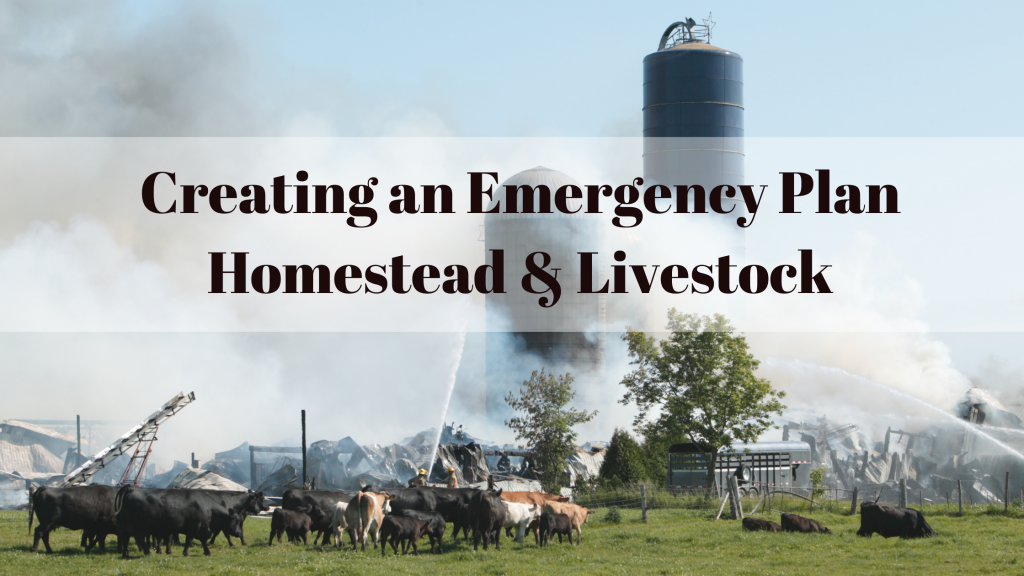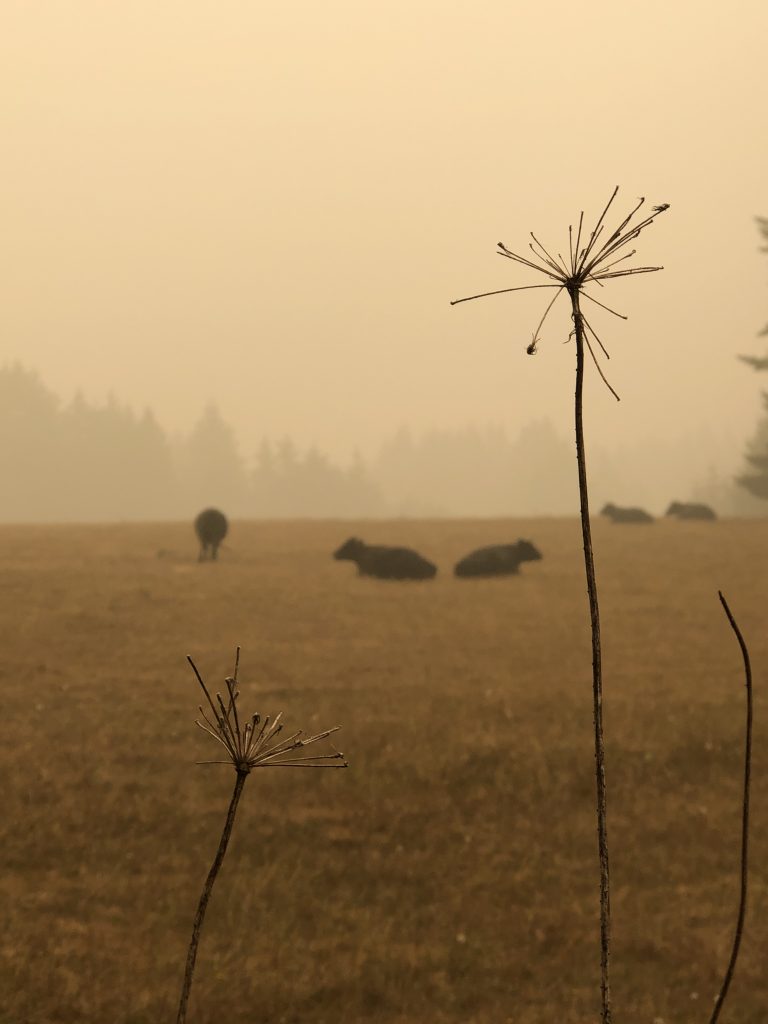I just lived through a very close brush with wildfire (with the evacuation zone coming within a mile of the farm). While I loosely had a plan in place, I realized quite quickly, it wasn’t as detailed as it needed to be.
My response to that close call is this blog post on creating an emergency plan for your homestead and livestock, as I figure I’m probably not the only one out there with generalized but kind of loose plans. The following will help us be as prepared as possible should we never need to be in the future.

If you live on a farm or homestead, you’re probably already acquainted with how fast weather conditions can change; a random hail storm flattening your garden, a flash flood filling up your coop, too much (or not enough) rain or sun…the list goes on and on.
While these are issues that come around enough that we’ve all dealt with at least some of them, what about when the problem is much bigger scale: a tornado, a hurricane, a wildfire, flash flooding…are you prepared with a plan should any of the above happen to your homestead and livestock? I realized recently that I wasn’t as prepared as I needed to be.
I encourage you to take some time to read the ideas below and come up with a plan for your own homestead and animals. Prepare for the worst, and for it happening soon. Then it will be one less thing you have to worry about should you need to put your plan into action.
General Preparedness
Regardless of the emergency, making an evacuation plan is the first order of business. If you will be moving animals, consider how you’ll move them, house them in their temporary location, feed them, and keep track of them.
- Make sure all of your animals are property tagged in some way so if they get lost, you’ll have a better chance of finding them and bringing them back home.
- Keep a current list of all your livestock and animals. If any of them have paperwork, make copies of these papers and keep them together in a plastic bag in a disaster kit.
- Make a list of important contact numbers such as: your vet, neighbors, emergency contact people, local animal shelters, county extension service, and other animal resources (i.e. fairgrounds, animal shelters and racetracks often open up for emergency housing of livestock), etc.
- Keep a copy of these lists inside your disaster kit, and also give the information to a friend/family member outside your area for safe keeping.

Moving Animals
If you hope to move your animal in an emergency, make a tentative evacuation plan. How will you transport them? Where will you take them? If you plan to move them across state lines, contact the USDA veterinary services for help and information.
Figuring this out before an emergency will save time and stress in the event that you need to execute the plan.
Leaving Animals
Sometimes moving livestock and other animals isn’t an option. If this is the case, consider the following:
- Do your livestock have adequate shelter? Is it sturdy? Add hurricane straps and other reinforcements as necessary. (If you need to build something, consider doing so on higher ground to help avoid flooding.)
- Figure out a way for you to leave up to a week’s worth of food and water. Don’t rely on methods that require electricity as the power might be down.
- If you have chickens or other small animals that normally stay locked in an enclosure, consider keeping the door open so they can escape should they need to. Make sure they have plenty of roost space in the event of flooding.
Wildfires
Additionally, if dealing with wildfire, consider clearing a defensible space around the pastures and barn to help keep the structures and animals safe.
Firefighters working the fires will try to help rescue as many animals as possible. They might cut the fence to help the animals escape if there is nearby danger. Having your animals marked will help you find and identify them should they run from your property and be lost somewhere.
Preparing for Pets
Each pet should have their own carrier and preparedness kit. For my cat, Truman, I have a tote with a lid that latches. Inside I have his medications, veterinary contact information, copies of medical records, food and water dish, two weeks’ worth of food, kitty litter, a liter bottle of water, some of his toys and a small soft blanket. The tote can serve as a litter box and easily fits behind the seat in my vehicle for easy loading (and use).
Other items to consider in a kit for your pets:
- Plastic bags for poo pick up
- Leash (and collar)
- Pet tags
- Paper towels
If you need to leave your pets, bring them inside and never leave them chained up outside. Give them access to food and water. Keep them in a room with as few windows as possible (ie garage, utility room, etc.)
Helping Where You Can
After the wildfire that just swept through my community, I learned that there are people everywhere willing to go the extra mile to help in any way they can. People with horse trailers hauled strangers livestock out of dangers way. Others on the outside of the fire zone offered barns, coops, and pastures. Others still, hauled in tons of hay to help feed displaced animals.
If you happen to be nearby but not in the middle of a danger zone, consider how you might help. For me, once the danger had (mostly) passed our farm, I took in 6 young hens that had to be left in an evacuation zone. While doing something like this is obviously helpful to others, don’t underestimate the benefits you get as well. For me, it was being able to do something in a situation where it felt like the bottom fell out of the world around me. Taking care of extra animals that were in harm’s way helped calm my frazzled nerves just a little. It gave me a little something positive to focus on.

You Can’t Overprepare
In the event of an emergency, there’s a lot going on and you have to make lightning-fast decisions. Having organized records, disaster preparedness kits for your livestock and pets (as well as for you and your family), and an evacuation plan sketched out will be of massive help to you when you need it.
The USDA prepared a check list that you might find helpful to help you plan for disaster with your livestock. You can grab it here. https://www.usda.gov/sites/default/files/documents/usda-livestock-preparedness-fact-sheet.pdf
Having just lived through a near evacuation with my flock and animals, I can testify to the fact that the more prepared you are for disaster, the better. Plan for the worst, but hope for the best.
Creating An Emergency Plan for Your Homestead and Livestockwas originally posted by My Favorite Chicken Blogs(benjamingardening)
Không có nhận xét nào:
Đăng nhận xét